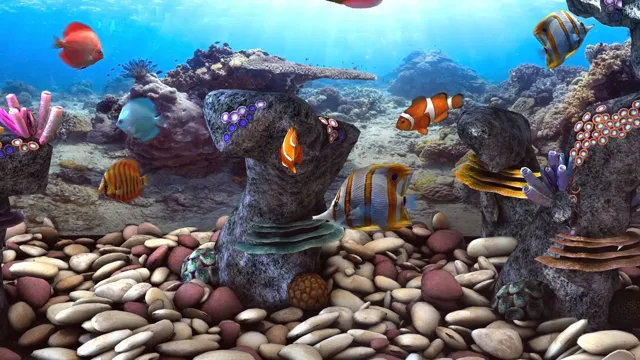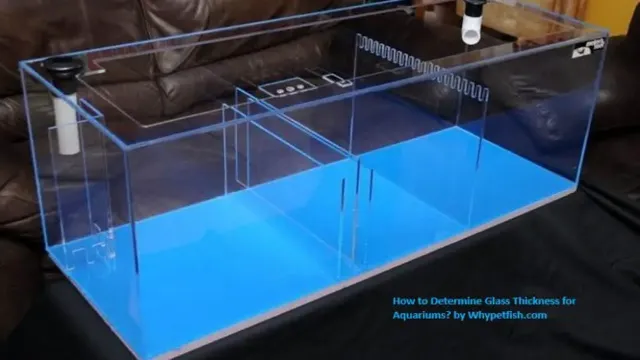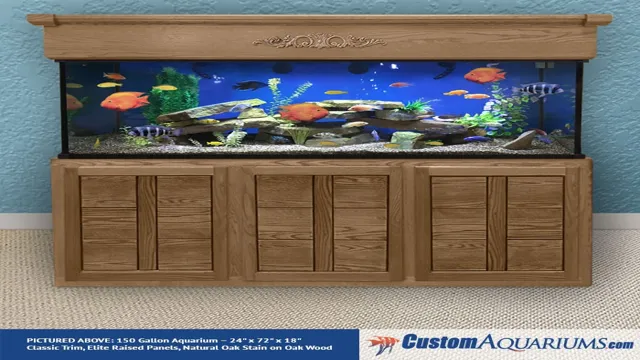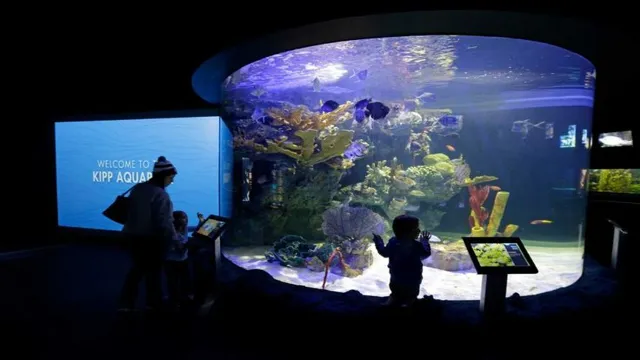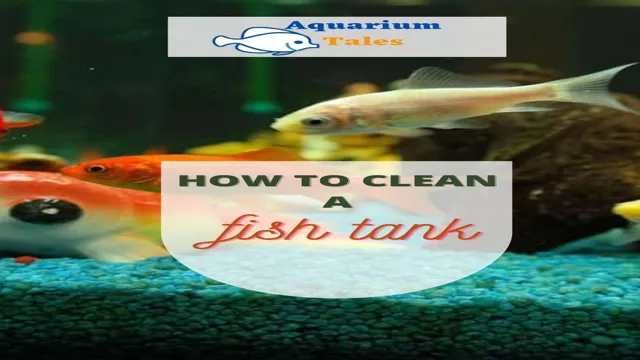If you’re considering setting up a marine aquarium, chances are you’ve come across the remarkable world of 3D printing. 3D printing has revolutionized many industries, including the aquarium industry. With its precision and versatility, 3D printing allows for the creation of unique and customized designs that were once impossible to achieve.
In the context of marine aquariums, 3D printing has become an invaluable tool for creating intricate rock structures, coral reefs, and even equipment components. Not only does 3D printing enhance the aesthetic appeal of your aquarium, but it can also improve the overall health and well-being of your marine life. So why not explore the possibilities of 3D printing for your marine aquarium?
Introduction
If you’re looking to add some creativity to your marine aquarium, 3D printing is a great option that enables you to design and print your own items at home. The process is easy and affordable, and it allows you to create unique pieces that can’t be found in pet stores. All you need is a 3D printer, some 3D modeling software, and a little bit of imagination.
Once you’ve designed your item, you can use the printer to produce it in a matter of hours. From decorations to structural items, 3D printing provides endless possibilities for customizing your aquarium. So why not give it a try and see what kind of unique creations you can come up with?
What is 3D Printing?
3D Printing 3D printing is a revolutionary manufacturing process that has taken the world by storm in recent years. As the name suggests, it is a way to create three-dimensional objects by layering material on top of each other. The technology behind 3D printing has many applications, from creating complex toys and jewelry to manufacturing airplane parts and medical implants.
It works by taking a 3D digital model and slicing it into very thin layers, which can then be printed layer-by-layer until the final object is complete. This process saves time and money compared to traditional manufacturing methods, and it also allows for greater flexibility and customization. 3D printing is a fascinating field that is rapidly evolving, and it has the potential to change the way we manufacture and produce goods in the future.
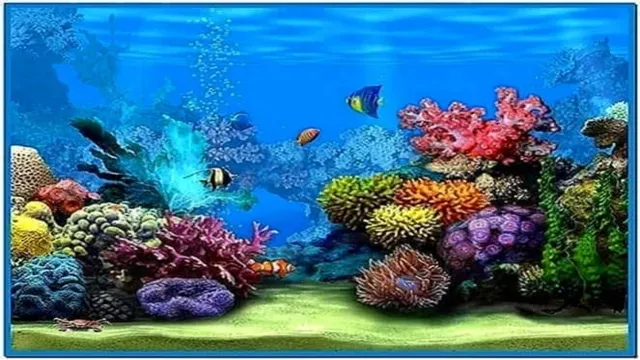
Types of 3D Printers
When it comes to 3D printing, there are many different types of printers available. Each type of printer uses a different technology to create 3D objects, which can vary in size, shape, and complexity. Some of the most common types of 3D printers include Fused Deposition Modeling (FDM), Stereolithography (SLA), and Selective Laser Sintering (SLS).
FDM printers are perhaps the most popular type of 3D printer, as they are affordable and easy to use. SLA printers, on the other hand, use light to cure liquid resin and can produce highly-detailed, accurate parts. SLS printers are typically used for industrial applications since they can produce parts made from a wide range of materials.
Understanding the different types of 3D printers is important when deciding which printer is right for your needs.
Designing Items for Your Marine Aquarium
If you’re a marine aquarium enthusiast, you’re always looking for new ways to enhance your tank’s appearance and functionality. One way to achieve this is by designing and 3D printing your own items for your tank. By using a 3D design software and a 3D printer, you can create items that are not commercially available or customize existing ones to fit your specific needs.
For example, you can design and print coral inserts to create a more realistic-looking coral reef, or create a custom-made filter inlet to improve water flow. The possibilities are endless, and the satisfaction of designing and printing your own items is unparalleled. With the rapid advancements in 3D printing technology, it’s becoming more accessible and affordable to hobbyists like yourself.
So go ahead and give it a try – your marine aquarium will thank you for it!
Choosing the Right Design Software
When it comes to designing items for your marine aquarium, choosing the right design software can make all the difference. There are many software options available, each with its own strengths and weaknesses. Some popular options include Adobe Illustrator, SketchUp, and Fusion 360.
Adobe Illustrator is great for creating 2D designs, while SketchUp is better suited for 3D designs and architectural models. Fusion 360 is a comprehensive design software that offers both 2D and 3D capabilities. No matter which software you choose, it’s important to pick one that you feel comfortable with and that meets your specific design needs.
With the right design software, you can create stunning and functional items for your marine aquarium, from custom coral structures to unique fish tank backgrounds. (See Also: How Soon Can I Add Plants to My Aquarium? Expert Tips and Guidelines)
Design Considerations for Marine Aquariums
Designing items for your marine aquarium can be a lot of fun, but it’s important to consider a few key factors before you start adding new pieces. First and foremost, you’ll want to consider the size of your tank and the type of fish and plants you have. Some fish require certain types of coral or rock formations, while others need plenty of open space to swim around.
You’ll also want to think about the overall aesthetic you’re going for and choose items that complement each other in terms of color and texture. Finally, don’t forget about practical considerations like how easy an item is to clean or whether it’s likely to become a hazard for your fish. With a little bit of research and careful planning, you can create a beautiful and functional marine aquarium that both you and your fish will love.
Choosing the Right Materials
If you’re a marine aquarium enthusiast, you know that creating a unique and beautiful environment for your fish requires the right materials. When it comes to 3D printing items for your aquarium, choosing the right materials is crucial. First, consider the needs of your aquarium inhabitants.
Are they sensitive to certain chemicals or temperatures? Many 3D printing materials release fumes or toxins that could be harmful to fish, so it’s important to opt for non-toxic materials like PLA or PETG. Additionally, make sure your chosen material can withstand exposure to water and won’t break down or degrade over time. ABS might be a popular 3D printing material, but it is not ideal for use in a marine aquarium due to its tendency to break down in water.
Ultimately, a robust and non-toxic material that provides the desired appearance will give you the best results.
Filament Materials for Marine Aquariums
When it comes to setting up a marine aquarium, choosing the right filament material is crucial. There are a variety of options available, but not all materials are created equal. One popular option is Nylon, which has excellent resistance to abrasion and is strong enough to withstand the harsh saltwater environment of a marine tank.
Another excellent choice is PETG, which is known for its clarity and strength. PETG also has very low moisture absorption, making it ideal for use in a humid marine environment. On the other hand, PLA is more budget-friendly but isn’t as strong as Nylon or PETG, which makes it better suited for less demanding applications like decorative pieces or non-structural components.
Regardless of which material you choose, always opt for high-quality filament to ensure the best results.
Resin Materials for Marine Aquariums
When it comes to setting up a marine aquarium, choosing the right materials is crucial. Resin materials, in particular, have become very popular for creating a stable and attractive home for your aquatic pets. Before you start shopping around for resin materials, it’s important to understand the different types available.
Polyresin, for example, is a popular choice because it’s durable, non-toxic, and easy to clean. Another option is polyester resin, which is also strong and resistant to water damage. However, it’s important to note that some types of resin materials may contain harmful chemicals which can endanger the health of your marine life.
Always do your research and purchase from a reputable supplier to ensure that you’re investing in the best quality and safest materials for your aquarium. By choosing the right resin materials, you can create a beautiful and safe underwater environment that your pets will thrive in.
Printing Your Items
If you want to customize your marine aquarium with 3D printed items, it’s easier than you might think. First, you need a 3D file of the item you want to print. You can either create it yourself with 3D modeling software or find it online through websites like Thingiverse.
Once you have the file, you’ll need a 3D printer and filament, which is the material used to create the object. Choose a filament that is safe for use in aquariums, such as PLA or PETG. Make sure to set the printer settings to the desired quality and size for your item.
It’s important to note that 3D printing can be time-consuming, so be patient and check on your item periodically. Once it’s finished, be sure to rinse it thoroughly and let it dry before placing it in your aquarium. By 3D printing customized items for your marine aquarium, you can add unique touches and enhance your underwater world.
Preparing Your 3D Printer
Once you have prepared your 3D printer, it’s time to start printing your items. It’s important to ensure that the bed is level and clean before you start printing. This helps to ensure that your printer produces high-quality results. (See Also: How to Clean Aquarium Plants of Snails: A Complete Guide to a Snail-Free Tank.)
Additionally, you should always use the correct type of filament for your printer. There are various types available, each with its own specific properties. PLA, for example, is perfect for creating items that don’t need to withstand a lot of stress.
ABS, on the other hand, is more durable and heat-resistant. Finally, make sure that your printer’s settings are correctly configured. This includes the temperature, print speed, and layer height.
A properly configured printer can mean the difference between a successful print and a failed one. With a bit of practice, you’ll soon be producing high-quality items with your 3D printer.
Printing Dos and Don’ts for Marine Aquariums
When it comes to printing for your marine aquarium, there are some dos and don’ts to keep in mind to ensure you’re not harming your marine life. Firstly, do use certified marine-safe ink to print any labels or signage for your aquarium. Ink that isn’t certified could contain harmful chemicals that may harm your marine life.
Secondly, don’t print on regular paper or cardstock as these can release harmful chemicals into the water. Instead, opt for synthetic paper or waterproof inkjet paper that won’t harm your marine life. Lastly, when printing, do ensure that any labels or signage are placed outside of the water, and are secured tightly to prevent them from falling into the aquarium.
This helps to prevent any accidental ingestion by your marine life and keeps your aquarium safer. Remember, keeping your marine aquarium safe for your marine life should always be a top priority, so follow these printing dos and don’ts to ensure the health and safety of your aquatic friends.
Post-Printing Considerations
When it comes to 3D printing items for a marine aquarium, there are a few post-printing considerations to keep in mind. First and foremost, it’s crucial to ensure that the printed item is safe for use in the aquarium. This means using materials that are non-toxic and won’t leach harmful chemicals into the water.
PLA and ABS are two of the most commonly used materials for aquarium-related printing projects. Once the item is printed, it may need to be cleaned or sanded down to remove any rough edges or imperfections. This is particularly important if the item will be placed in a tank with delicate marine life that could be harmed by rough surfaces.
Finally, it’s important to continually monitor the item after it’s been added to the aquarium to ensure that it’s not having any negative impact on the water quality or the wellbeing of the creatures in the tank. By taking these post-printing considerations into account, you can ensure that your aquarium is not only visually appealing but also safe and healthy for its inhabitants.
Finishing Your 3D Printed Items
When it comes to 3D printing, finishing your items is just as important as the printing process itself. Post-printing considerations can make the difference between a mediocre print and a polished, professional-looking item. One of the first steps in finishing your 3D printed items is removing any supports or rafts that may have been used during printing.
This can be done by simply snipping them off with pliers or an exacto knife. Next, it’s important to sand your item to remove any imperfections and rough edges. Starting with a coarse grit sandpaper and working your way down to a finer grit will ensure a smooth finish.
Finally, consider adding a coat of paint or varnish to really give your item a professional touch. By taking the time to finish your 3D prints properly, you can be proud to display them for all to see.
Cleaning and Maintenance
After printing your 3D design, it’s important to properly clean and maintain it. One post-printing consideration is to remove any support structures that were used during the printing process. Depending on the material used, you may need different tools to remove them.
For example, if you used PLA filament, you can easily remove the supports by hand or with pliers. If you used ABS, you may need to use a specialized tool like a wire cutter to remove them. It’s also important to check for any excess filament that may have dripped or oozed out during printing. (See Also: How to Clip on Aquarium Light: A Comprehensive Guide for Beginners)
This can be removed with a hobby knife or sandpaper. Finally, you may want to consider applying a protective coating to your print to ensure its longevity. A clear spray sealant can add an extra layer of protection and prevent yellowing or fading over time.
By taking these post-printing considerations into account, you can ensure that your 3D print is clean, well-maintained, and long-lasting.
Conclusion
In conclusion, 3D printing is a fantastic tool for creating custom items for your marine aquarium. With the ability to design and print objects to fit the specific needs of your tank and its inhabitants, the possibilities are truly endless. Using 3D printing, you can create intricate coral structures, unique hiding spots for your fish, and even custom feeding stations.
So why settle for generic off-the-shelf décor when you can bring your own designs to life in 3D? Dive into the world of 3D printing and take your aquarium to the next level!”
FAQs
What is 3D printing?
3D printing is a process of creating three-dimensional objects from a digital file using a 3D printer.
Can you 3D print items for a marine aquarium?
Yes, you can 3D print items for a marine aquarium such as coral replicas, decorations, and even custom housing for equipment.
What type of 3D printer should I use to print items for a marine aquarium?
It is recommended to use a 3D printer that can print in water-resistant materials such as PLA, PETG, and ABS.
Are there any precautions I need to take when 3D printing items for a marine aquarium?
It is important to ensure that the materials and design of the printed items do not have any toxic effects on the aquatic environment and its inhabitants.
Can I print a custom intake cover for my aquarium filter?
Yes, you can use 3D printing to create a custom intake cover for your aquarium filter that fits securely and also allows for optimal water flow.
How do I create a 3D design for my marine aquarium?
You can use 3D modeling software or even download pre-made designs from online repositories.
What are some benefits of 3D printing items for a marine aquarium?
Using 3D printing allows for customization of items in terms of size, shape, and design, and can also save money compared to purchasing pre-made items.

